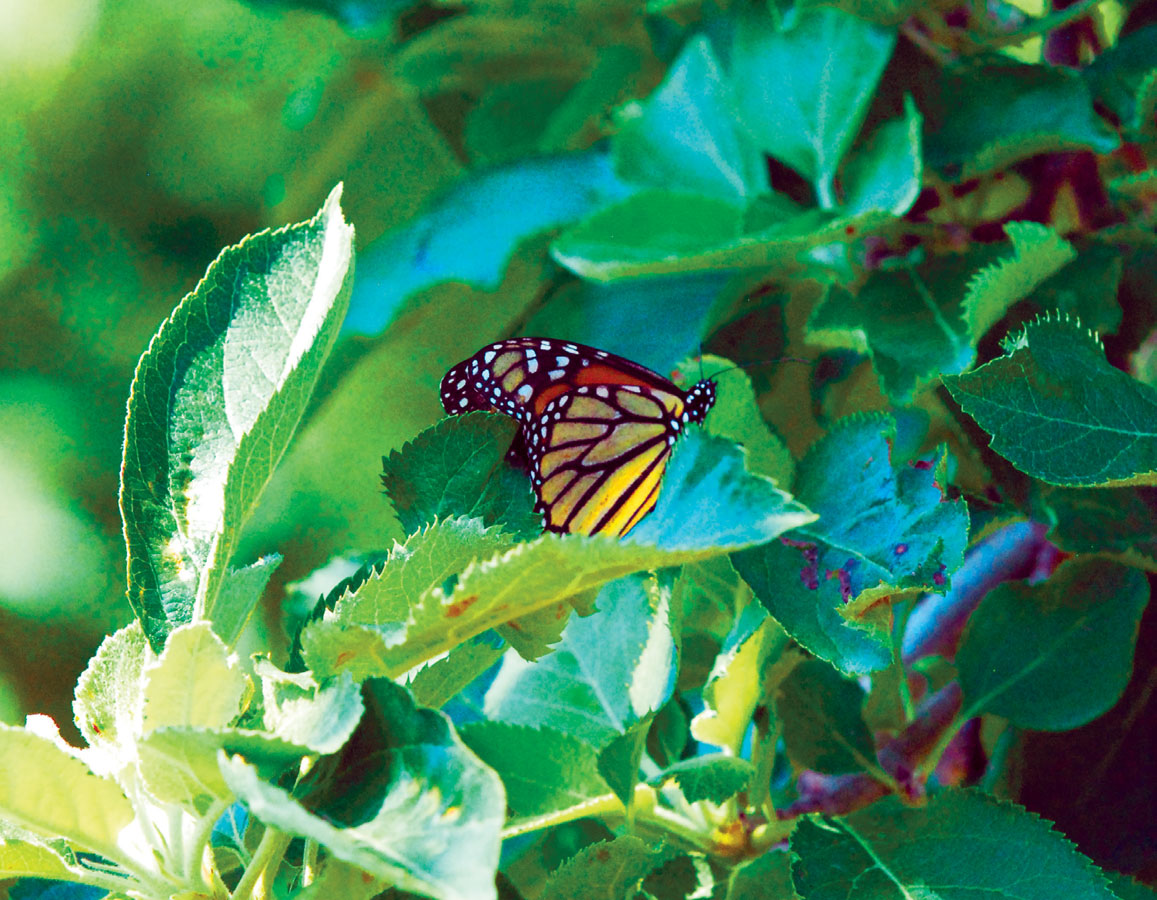Save the Pollinators!
The Costs of Superweeds, Failing Herbicides and Imperiled Monarch Butterflies in Iowa Farmlands
Since the beginning of spring, Iowa farmers who routinely use glyphosate herbicides for weed control have been barraged by one kind of game-changing news after another. Whether you’ve noticed it or not, a “perfect storm” of research reports, government initiatives and policy changes have begun to restructure weed and pollinator management in ways that will inevitably affect farm viability and rural health.
The recent convergence of five emerging drivers of change will no doubt impact agribusiness as usual over the coming years: the new EPA restrictions of the use of glyphosate herbicides that have been generating rather that restricting herbicide-tolerant superweeds; the controversial release of World Health Organization reports that presumably link glyphosate to the rise in cancers such as non-Hodgkin’s lymphoma; the tripling of the Fish and Wildlife Service target number of milkweeds needed in the Midwest breeding grounds for monarchs to avert federal listing this butterfly as a threatened species; and plummeting sales of herbicide-tolerant corn seed and glyphosates from (and stock values for) agrichemical and biotech companies which have offered farmers few cost-effective choices in recent years to use for controlling weeds.
If only one of these stressors had caused a media uproar over the last months, it would have created enough anxiety among Midwestern farmers, many of whom are already worrying about reduced income relative to rising productions costs and liabilities. But what has happened since winter’s end is more like a quarterback being hit from several sides at once; they are sobering signals that it may be time for farmers to rethink the game plan. Let’s unpack what has happened.
First of all, the ever-increasing problem of herbicide-resistant weeds has been triggering farmer dissatisfaction as well as economic woes at least since 2008. And yet, the arrival of another superweed, Palmer’s amaranth, has not only concerned farmers in the three Iowa counties where it is now documented, but in other counties as well. I know this heat-adapted invader well; I counted tens of thousands of this plant per acre while assessing its effects on crops during my dissertation work in the Desert Southwest during the 1980s. In 2004, it was already costing farmers in the southern reaches of our country $35-40 an acre to control this weed; as it has become more herbicide-tolerant, control costs have risen to as much as $150 per acre, with extra tillage, multiple sprayings and yield losses all making farmers’ lives more difficult. The EPA decision to place added constraints of glyphosate use was triggered not merely by the spread of Palmer’s amaranth, but by that of another dozen herbicide-tolerant weeds as well, which now dominate row crops on more than 60 million acres of American farmland.
Upon confirming that more than a third of Iowa farmers report herbicide-resistant weeds in their row crops, Iowa State University agronomist Mike Owen conceded that “Simple and convenient tactics are failing rapidly and farmers must diversify, not just the herbicides they use, but everything.” He also suggested that it will be key to go beyond blaming neighboring farmers for the arrival on your land, to integrated, community-based weed management. Such comments and strategies were not in common parlance a quarter century ago, but they may now be essential to Iowa’s economic future.
The World Health Organization report released in late March that links glyphosates exposure to non-Hodgkins lymphoma (NHL) is and will be hot-debated for some time. But what is not debated is that NHL rates in the U.S. have doubled since the beginning of the 1980s and that it has become the fifth leading cause of cancer in the United States. Regardless of whether glyphosates are a found to be a negligible, minor or significant contributing cause to this cancer, this announcement has already triggered Senate hearings on the issue. Why? Pesticide applicators, farmers and farmworkers already shoulder a disproportionate burden of exposure to carcinogens affecting public health. As the people who feed America, it is incumbent upon our lawmakers to protect our agricultural workforce from any further exposure to public health risks.
Farmer dissatisfaction with rising costs and liabilities may be one reason Midwestern farmers have planted less corn this year by at least 4%. It may also bed why Matt Connelly of CLSA claimed on CNBC that agrichemical companies now have “an image problem” that has contributed to declines in their sales and stock value over the first quarter The timing of this “image critique” is ironic, since both Monsanto and Bayer CropScience had recently attempted to improve their image by making significant contributions toward farmland habitat recovery of monarch butterflies and other pollinators.
These companies recognize that the numbers of monarch butterflies have declined by as much as 97% over the last fifteen years, and clearly want to be seen as part of the solution not the problem. Nevertheless, it came as a shock to many this last month when Dan Ashe, Director of the U.S. Fish & Wildlife Service, announced tripling the five-year goal of monarch butterfly recovery to avert federal listing, by attempting to recruit 225 to 300 million monarchs to their continent-wide migration by planting milkweeds. Perhaps Ashe did not fully fathom that it would take planting as many as 2 billion additional milkweeds in monarch’s summer breeding grounds in the Midwest to achieve such a goal! Recent research by USDA and Iowa State researchers has suggested glyphosate decimation of milkweed host plants as a major cause, as well as direct exposure of monarchs to the neonicotinoid insecticide, clothianidin, as an added stressor.
Achieving Ashe’s target for butterfly recovery will not only require the planting of millions of new milkweeds in agricultural landscapes where there are no longer enough to serve as host plants for monarchs. It will also mean protecting from pesticide and herbicide exposure the millions of milkweeds that may still occur on CRP lands on farms and along roadsides. Implicit in Ashe’s new target is the realization that the government and industry cannot simply pay to have new milkweeds propagated if exposure to toxic chemicals kills them after their planting in farmscapes.
What’s new about the convergence of these emerging problems is that they are not so much pitting farmers against environmental concerns as they are an admission that public and environmental health are now economic concerns. Controlling superweeds hurts the pocketbooks of the women and men owning Iowa’s farmlands, affecting operation costs and land values. And what farmers want to shoulder the economic, social or emotional costs of seeing excessively-applied toxins potentially impair their family’s health or that of the iconic butterfly that their children and grandchildren adore? grandchildren adore?
It is a critical moment to decide whether we want to foster innovations that provide fresh solutions to these problems, or to simply defend business as usual, even though it is already offering diminished returns. From my perspective, the solutions should come from farmers themselves, not regulators. But will Iowa women and men who own, manage and work some of the most productive farmlands in the world conceded their own growing dissatisfaction with the current toolkit they have for weed and insect management? My prayer is that they will engage with others to implement innovations that can ultimately provide them with the yield stability, lower production costs and consistent results in weed control that many farmers desperately desire and deserve.
Dr. Gary Paul Nabhan, OEF, is an orchard-keeper, agro-ecologist and Franciscan brother. He attended Cornell College in Mount Vernon and has worked on farms and ranches throughout the Midwest and Southwest.





